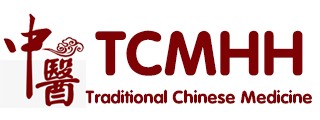NAME
SHENSHU
LOCATION
1.5 cun lateral to the lower border of the spinous process of the second lumbar vertebra.
Locate at the visible highest point of the paraspinal muscles.
1.5 cun lateral to DU-4 Mingmen at the level of lower border of the spinous process of the second lumbar vertebra.
NEEDLING
Oblique or perpendicular-oblique insertion towards the spine 1 to 1.5 cun.
Caution: deep perpendicular needling carries a risk of injuring the Kidney.
Straight insertion pointed slightly toward the spine, 1.5 to 2 cun. Sensation: distention in the lower back or an electric, numb sensation extending toward the buttocks and lower extremities.
Caution: Care should be taken not to insert the needle too deeply, or away from the spine, to avoid puncturing the Kidneys.
Puncture perpendicularly 1 to 1.2 cun.
Moxibustion is applicable.
COMMAND FUNCTIONS
Back-Shu point of the Kidneys
ACTIONS
Tonifies the Kidneys
Fortifies Yang
Benefits Jing
Nourishes Kidney Yin
Regulates Kidney Qi
Strengthens the Kidneys' function of receiving Qi
Firms Kidney Qi
Regulates the water passages
Regulates the Lower Jiao
Benefits urination
Resolves Dampness
Benefits and warms the uterus
Benefits the ears and eyes
Strengthens the lumbar region
Nourishes Blood
Benefits bones and marrow
Tonifies Yuan Qi
Expels urinary stones
INDICATIONS
Edema
Deficiency-taxation edema
Difficult urination
White turbidity
Enuresis
Frequent urination
Dripping urination
Wasting and thirsting disorder with frequent urination
Hematuria
Cold or Damp diarrhea
Borborygmus
Undigested food in the stools
Eats a lot but remains thin
Pain of the lateral costal region
Cold and distention of the Stomach
Cold vomiting
Kidney Deficiency Deafness
Tinnitus
Visual dizziness
Night blindness
Blurred vision
Heavy head with Heat in the body
Redness and Heat of the face
Redness of the head and body
Yellow-black complexion
Wind headache
Alternating chills and fever
Rebellious qi Heart pain
Hemiplegia
Nephroptosis
Alopecia
Anemia
Sequelae of infantile paralysis
Seizures
Cold knees
Osteoporosis
Osteomalacia
Blurred vision
A constant desire to sleep
Atrophy syndrome due to Deficiency
Pulmonary tuberculosis with chills and shortness of breath
Generalized weakness
Amenorrhea
Abdominal cramps
Prostatitis
Urinary tract infection
Urinary retention
Optic nerve atrophy
Emaciation
Disorientation
Lethargy
Seminal emission
Seminal emission with dreams
Spermatorrhea
Urine containing semen
Impotence
Premature ejaculation
Genital pain
Acute hypogastric pain
Irregular menstruation
Accumulation of Cold in women giving rise to taxation
Chronic Cold of the uterus
Emaciation in women due to sexual intercourse during menstruation
Leukorrhea
Red and white leukorrhea
Chronic dyspnea
Chronic cough
Asthma
Diminished Qi
The five taxations and the seven injuries
Taxation of the five Zang
Chronic Cold of the Kidneys
Deficiency-taxation emaciation
Pain and soreness of the lumbar region
Pain and soreness of the knees
Icy-cold sensation of the lumbar region
Cold legs
Weak legs
Hot and cold sensations of the bones
Windstroke
Nephritis
Renal colic
Lower back and soft tissue injuries
Hematuria
Tidal fevers
Arthritic bone deformities
Poor memory
Fatigue
Acute urinary stones
Infantile paralysis
Bronchial asthma
Neurasthenia
Menopausal syndrome
Dysmenorrhea
Diabetes
Painful urinary dysfunction
Urinary incontinence
Eye fatigue
Chronic knee, sacral or lower back pain
Kidney stones
Poor concentration
COMBINATIONS
| UB-64 Jinggu KI-2 Rangu | UB-11 Dazhu GB-39 Xuanzhong KI-7 Fuliu ST-45 Lidui UB-62 Shenmai | UB-15 Xinshu |
| Cold in the lower extremities | Cold and pain in the bone marrow | Weakness of the Kidneys and lumbar region accompanied by seminal emission |
| UB-24 Qihaishu UB-29 Zhonglushu | UB-40 Weizhong KI-3 Taixi UB-30 Baihuanshu | DU-4 Mingmen |
| Lumbar pain | Lumbar pain due to Kidney Deficiency | Lumbar pain in the elderly Incontinence of urine a feces in the elderly (moxa) |
| LIV-13 Zhangmen | UB-25 Dachangshu | UB-21 Weishu |
| Invasion by Cold or Damp diarrhea containing undigested food in the stool | Cold or Damp diarrhea with undigested food in the stool | Vomiting or Cold in the Stomach with distention and much eating but remains thin |
| LIV-3 Taichong | REN-4 Guanyuan SP-6 Sanyinjiao | KI-2 Rangu DU-4 Mingmen REN-6 Qihai |
| Deficiency-taxation edema (moxa) | Seminal emission White turbidity | Impotence |
| UB-52 Zhishi UB-64 Jinggu LIV-3 Taichong | GB-26 Daimai REN-6 Qihai REN-3 Zhongji SP-6 Sanyinjiao | M-CA-18 Zigong REN-3 Zhongji REN-5 Shimen |
| Genital pain | Irregular menstruation | Ceaseless uterine bleeding |
| GB-2 Tinghuior LI-6 Pianli GB-2 Tinghui | ST-36 Zusanli LI-4 Hegu | SI-19 Tinggong GB-2 Tinghui SJ-21 Ermen DU-20 Baihui UB-8 Luoque LI-5 Yangxi SI-2 Qiangu SI-3 Houxi SI-4 Wangu SJ-3 Zhongzhu SJ-2 Yemen LI-1 Shangyang |
| Deafness due to Kidney Deficiency | Deficiency tinnitus | Tinnitus |
| ST-39 Xiajuxu GB-40 Qiuxu GB-43 Xiaxi | ST-3 Juliao | REN-3 Zhongji SP-6 Sanyinjiao KI-7 Fuliu UB-58 Feiyang M-CA-18 Zigong |
| Fullness of the chest and lateral costal region radiating to the abdomen | Chest and diaphragm obstructed by Blood Stasis Congealed Blood in the chest and abdomen | Nephritis |
| UB-28 Pangguanshu REN-3 Zhongji SP-6 Sanyinjiao | LI-4 Hegu ST-36 Zusanli | UB-28 Pangguanshu SP-9 Yinlingquan |
| Urinary tract infection | Diabetes | Damp-Heat in the Lower Jiao |
| LIV-13 Zhongmen | UB-20 Pishu | |
| Cold diarrhea with undigested food in the stool | Promotes the formation of Blood to treat Blood Deficiency |
CONTRAINDICATIONS
NOTES
This is the main point to tonify the Kidneys. This is one of the principle points to strengthen the Kidneys, fortify Yang, nourish Yin and benefit Jing. It tonifies the mind, stimulates initiative, liftss depression and strengthens will power.
